This is the unedited version of my Play to Win! article, as published in issue 17 of Retro Gamer magazine.
This article was originally published in September 2005.
Back in the 8-bit era, cyber-athletes and professional game players were unheard of, and the only people that made any serious money from games were the publishers and the developers that worked on them. But if you happened to be good at the right games, there were sometimes fabulous prizes to be won. To find out more, Adam Dawes has donned his deerstalker hat and tracked down some of the prizes that were up for grabs.
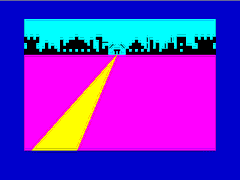
PiMania (Automata, 1982)
Released for the ZX81, Spectrum, BBC, Dragon.Kicking the trend of prizes for games off in style, Automata strode boldly onto the scene back in 1982 and offered "The Golden Sundial of Pi", a De Beers award-winning trophy worth £6,000 in a competition based around their game PiMania. Advertising itself as "an investment", the game no doubt stirred up a lot of excitement over the possible riches to be won, but the developers certainly knew how to make people work for them.
The game was a terse and rather bizarre text adventure based around the Pi Man, an odd looking creature obsessed by the Greek symbol Pi. It went out of its way to be difficult, with delightful tricks such as pausing for no apparent reason if you entered an unrecognised command.
To claim the prize, players needed to play through the game revealing clues to not only the location of the sundial, but also the date on which it could be claimed. There was no shortage of ideas about where and when the prize would be found, including one from a man who apparently travelled to Bethlehem on Christmas Day - and must have been very disappointed on his journey home empty- handed.
It took nearly three years, but the perseverance eventually paid off for two lucky winners as Sue Cooper and Lizi Newman from Yorkshire claimed the prize. It was won on the 22nd July 1985 in the mouth of the White Horse, a chalk figure carved into the side of Hindover Hill near Eastbourne, East Sussex, UK.
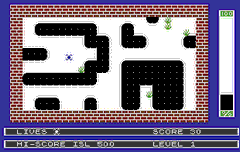
Splat! (Incentive Software, 1983)
Released for the Spectrum, Commodore 64, Amstrad.After the extravagance of the Golden Sundial, the competitions that followed in 1983 started off rather more modestly. Incentive Software offered the next challenge with what was to be the first of many prizes for their games: £500 was to be awarded to the player that achieved the highest score
Splat! is an arcade-style game in which the player runs around picking up grass and plums from a scrolling maze. The scrolling is controlled by the computer however, and you never know which way it will turn next. Crashing into any of the walls or other obstacles results in a loss of one of your lives.
Incentive built a score verification system into the game to stop people from cheating. The highest score was submitted by 17-year-old James Tant, scoring over 112,930 points. He claimed his secret was practising for between five and seven hours every day for several months. Some might say that was a bit excessive, but at least his effort was rewarded.
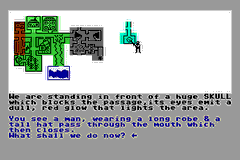
The Mountains of Ket Trilogy (Incentive Software, 1983)
Released for the Spectrum, Commodore 64, BBC, Dragon.With their Splat! competition well underway and obviously proving popular, Incentive launched the second of their challenges. This time the prize was £400 worth of video recording equipment and the title of "Britain's Best Adventurer", to be awarded to the first person to get a score of 100% on all three games.
The trilogy consisted of The Mountains of Ket, The Temple of Vran and The Final Mission, which together formed a fairly sizable text adventure in which your character tries to escape from a death sentence for a crime he did not commit.
The game was fairly enjoyable in its day even without the promise of real riches at the end, though it did have some rather unfair combat scenes and a few random encounters that could make the game unwinnable.
The trilogy was finally completed by 47-year-old Tom Frost from Montrose, Scotland at the beginning of 1985. He was presented with his video recorder at Incentive's head office in Reading. Britain's Best Adventurer later went on to form Tartan Software, releasing a string of text adventures for the Spectrum.

My Name is Uncle Groucho, You Win a Fat Cigar (Automata, 1983)
Released for the Spectrum.At the end of 1983, the Pi Man returned to guest-star in yet another bizarre game from Automata. Back to prove that they had the best prizes and the weirdest games, the player was put in pursuit of Groucho Marx as he toured across the U.S.A.
It was perhaps slightly easier to figure out what on earth was going on than it was in PiMania, but you were still dropped in at the deep end and left to fend for yourself with very little in the way of instructions or clues as to what on earth was going on.
As with Automata's previous game, it may have been the lure of the prize that kept people playing. It was certainly worth playing for: a trip on Concorde to New York, jetting to a luxury Hollywood hotel with £500 spending money, then a stay in the Waldorf Astoria in New York and then finally a cruise home on the QEII. Now that's a bit better than a video recorder.
This time the player's task was to uncover a mystery celebrity, clues to the identity of which were scattered throughout the game. When you thought you had the answer you filled in the entry coupon that came with the game and posted it back, along with a tie-breaker slogan for Automata. That was the one and only chance to enter so it was important to be sure the answer was right before the card was dropped in the post box.
The prize was claimed the following year by Phil Daley from Stoke-on-Trent. He identified Mickey Mouse as the hidden celebrity, and provided the slogan, "There's no blood in our games, it's all tomata sauce".
Sadly that was to be the last prize offered by Automata, but there were plenty of other companies ready to try the idea.

The Staff of Karnath (Ultimate, 1984)
Released for: Commodore 64.Ultimate's debut Commodore 64 game was memorable in particular for its detailed pseudo-3d graphics, and its devilishly difficult game play. Just like the soon-to-be-released Entombed, many players found themselves wandering aimlessly around the game's dungeons, revelling in the ambience but not really sure what they were supposed to be doing.
Ultimate clubbed together with Personal Computer Games magazine and launched their own competition, challenging players to finish the game. A unique-looking trophy, inscribed with the words, "The Staff of Karnath - Ultimate Play The Game" was waiting for whoever first sent the solution to the game to Ultimate.
Several months later, the game was won by schoolboys Lee Goldstone and Matthew Porter from Kent. By the time they claimed it, Personal Computer Games magazine had stopped being published, but the newly-launched Zzap!64 picked up from where it left off, and featured the boys' complete illustrated solution in the very first issue.
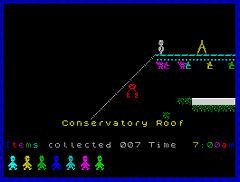
Jet Set Willy (Software Projects, 1984)
Released for the Spectrum, Commodore 64, Amstrad, and others.One of the best-known prizes up for grabs was the one offered for the first person to complete Jet Set Willy and reveal the total number of items to be collected in the game.
The story behind this is legend and has been told many times before. In case you have been living under a rock for the last 20 years, the original release was bugged and as a result was impossible to finish. We'll give Software Projects the benefit of the doubt and assume this was a genuine mistake.
The prize on offer was six champagne glasses, a crate of Don Perignon champagne, and a flight over the winner's home town in a Jet Ranger helicopter with Matthew Smith. Not a bad prize at all. With the popularity of the game, the competition must have been fierce!
Once the game had been patched to fix the bug, the prize was eventually won by Ross Holman and Cameron Else from London. Apparently unimpressed by the promise of alcohol and rotor-blades, they ultimately decided to take cash instead to spend on new computers.

Psytron (Beyond Software, 1984)
Released for the Spectrum and Commodore 64.Beyond decided to get in on the act in 1984 too, offering a Sinclair QL as the prize in their latest title.
Psytron is an attractive and stylish-looking strategy/shoot-em-up game. The game increases in difficulty as it continues, requiring the player to perform to a certain standard on each level before the next can be accessed. Additional complexity is added during levels one to five, before the game eventually starts for real in level "F".
Players looking to win the prize were expected to last a full hour in level "F", which really is quite a challenge. A winner was eventually found though; Michael Wood from Exeter collected his QL at the end of 1984.

Hareraiser (Haresoft, 1984)
Released for the Spectrum, Commodore 64, Amstrad, Oric-1, BBC.Of course, there are no new ideas, only fresh interpretations. Predating all of the competitions in computer games was a book called Masquerade by British artist and author Kit Williams. With the help of a series of riddles and intricately detailed paintings, the book hinted as to the secret location of a jewelled golden hare, created by Williams from 18-carat gold and inset with numerous precious stones.
The book proved to be extremely popular, and in 1982 the hare was found by Ken Thomas in the Bedfordshire countryside.
After storing the hare in a bank vault for a couple of years, Thomas presumably decided that the hare had the potential to make more money than its face value, and so he set up a company called Haresoft. The hare was re-hidden somewhere in the UK, and Haresoft released a two-part game to challenge players to track down its location, just as in the Masquerade book before it.
Unfortunately, the location of the hare was never discovered. The game received particularly bad reviews, and Haresoft went into liquidation. The hare was auctioned at Sotheby's in an attempt to pay the company's creditors, selling for £31,900. Kit Williams was present at the auction himself, bidding £6,000 in an attempt to get his creation back, but was unable to bid any further.
The hare has appeared once more since then, being auctioned for a second time in the late 1990s. It was bought by an anonymous bidder, and since then its location has become a mystery once again.
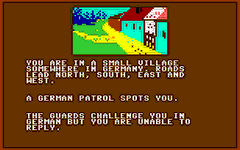
Eureka! (Domark, 1984)
Released for the Spectrum and Commodore 64.Written by Ian Livingstone, Eureka! consisted of a series of related graphic adventure games set across various points in history. The game had you hunting for pieces of a talisman that had arrived back in prehistoric times, in Roman Italy, in Arthurian Britain, in Colditz during the Second World War and in the present-day Caribbean.
Each adventure was also preceded by a short arcade game in which you could increase your 'vigour' level for the forthcoming adventure section. Altogether the games made quite a memorable package - though certainly not an easy one to beat.
Domark had enough confidence in the release to offer an enormous reward of £25,000 to the first person to complete the challenge that came with the game. Each section of the game had a clue associated with it, and once all of these had been solved they could be put together to reveal a hidden code and a telephone number.
The prize was won in 1985 by fifteen-year old Matthew Woodley. Matthew had to call the telephone number three times before finally finding the courage to leave a message on the answering machine at the other end. No doubt he was very glad he did when he received his cheque.
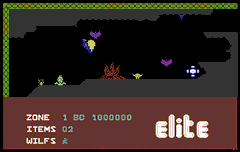
Kokotoni Wilf (Elite, 1984)
Released for: Spectrum, Commodore 64, Amstrad.Elite decided to jump on the prize-giving bandwagon in 1984 too. Unfortunately they eschewed the prizes of vast value that the likes of Domark and Haresoft were offering, deciding instead to give the first people to finish Wilf a copy of their next game (The Fall Guy) and a chance to meet Lee Majors, the star of the TV series on which it was based.
Kokotoni Wilf was a moderately enjoyable (though in places rather frustrating) platform game in which you guided a winged character through a series of adventures based in different time zones. In each section a fragment of an amulet was to be found. Sounds familiar - though this is presumably coincidence as Wilf was released at about the same time as Eureka!.
When completed, a special message was displayed which could be used to participate in the competition. Players were informed upon entering of a somewhat cheeky extra condition that they were required to meet in order to stand a chance of winning the star prize, meeting Lee Majors: this would be awarded to the first five winners who had letters published in the computer press praising Kokotoni Wilf.
Whether any such letters were published we have been unable to determine, but it wouldn't be surprising if this particular prize went unclaimed.
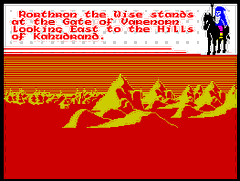
Doomdark's Revenge (Beyond Software, 1984)
Released for: Spectrum, Commodore 64, Amstrad and others.The long awaited-sequel to The Lords of Midnight continued the epic story set in the Land of Icemark. Luxor the Moonprince found himself struggling against all odds to rescue his captured son Morkin, and destroy the evil Empress Shareth.
Each of these goals could be completed individually, but to fully complete the game and reveal the mysterious Watchwords of Midnight, both objectives needed to be completed together. Beyond offered a model of Icemark and a set of lead figures of the major characters in the game to the first player to call them with the details of the Watchwords.
15-year-old Richard Harris from Lowestoft was playing the game before leaving for school one morning in November 1984, shortly after the game's release. He had sent his troops to rescue Morkin from where he believed he was being held, and then continued onwards towards Shareth. Much to Richard's amusement, a random dwarf finished the job before he got there. After a valiant struggle home, the game was finished and the Watchwords revealed.
Richard had to run for school, but fear of someone else claiming the prize evidently got the better of him later in the day and he got permission to call Beyond from his headmaster's office!
It took slightly longer to actually get the prize than to complete the game, however. The models finally arrived a full 14 months later in January 1986. Beyond claimed that they hadn't expected anyone to finish the game so quickly and that it had taken them this long to get the models ready.
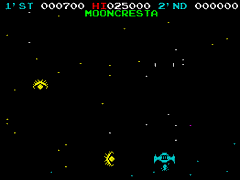
Moon Cresta (Incentive, 1985)
Released for: Spectrum, Commodore 64, Amstrad, BBC.As a new year dawned, more competitions were gearing up to find more winning gamers, but as the era of the Multiface and Action Replay cartridges approached with their built-in cheat functions, these were to be among the last of their breed.
Incentive returned with another competition though, following on from the successful challenges set during the years before. Offering their biggest prize so far, a genuine Nichibutsu Moon Cresta arcade machine was the item luring players to send in their high-score details this time.
The conversion itself was greeted with a fairly warm reception by the computer press. The game is a Space-Invaders/Galaxian variant, requiring the player to guide their three-part ship through a series of attack waves. Skilful players could dock the segments of the ship together to increase its firepower, though it also made for a much bigger target for the invading forces to attack.
Anyone with a high-score of 30,000 points or more was eligible to enter, the final winner being drawn at random from all of the scores submitted. Over 4,000 entries were received, and the coin-op was eventually awarded to Ian Clark from Newcastle.
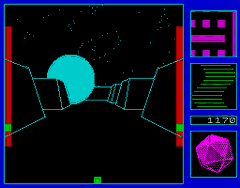
Gyron (Firebird, 1985)
Released for the Spectrum.Finishing off this round-up in style, a fantastic Porsche 924 sports car was an excellent incentive for players of Gyron. This was never going to be an easy prize to win though…
The game revolves around a virtual journey though a high-tech computer system with the player attempting to shut down the defence systems and destroy the computer itself. It is presented from a smoothly animated first-person perspective that plays very nicely, though the game is undoubtedly very difficult to master. There were reputed to be only four ways to solve the game, and it was also billed as being poke-proof.
All the players that managed to complete the game eventually played together in an international head-to-head, held simultaneously in the UK, Spain and Denmark, to find who could complete a brand new level of the game the quickest. The winner was 16-year-old Juan Manuel Perez Vazquez from Malaga in Spain, who completed the level in a lightning-fast 18 minutes.
Being too young to drive, he decided to take cash instead of the car and pocketed a rather tasty £12,800 for his efforts.
This article is copyright © Adam Dawes,
2005.
It may not be copied or redistributed without my express written
permission.